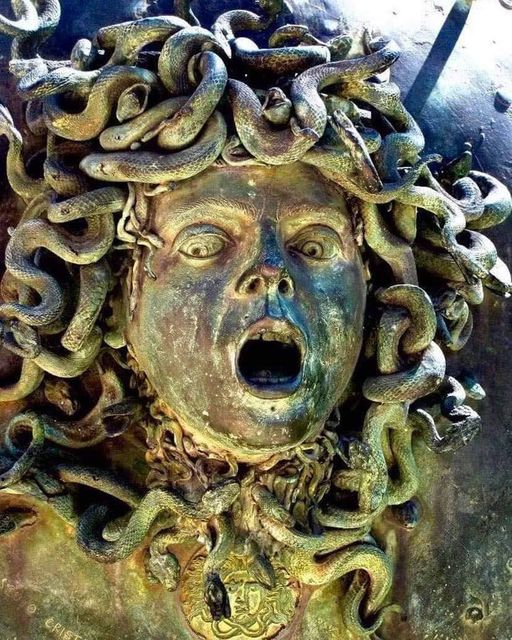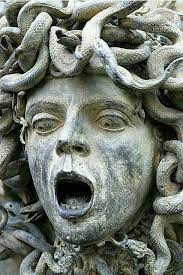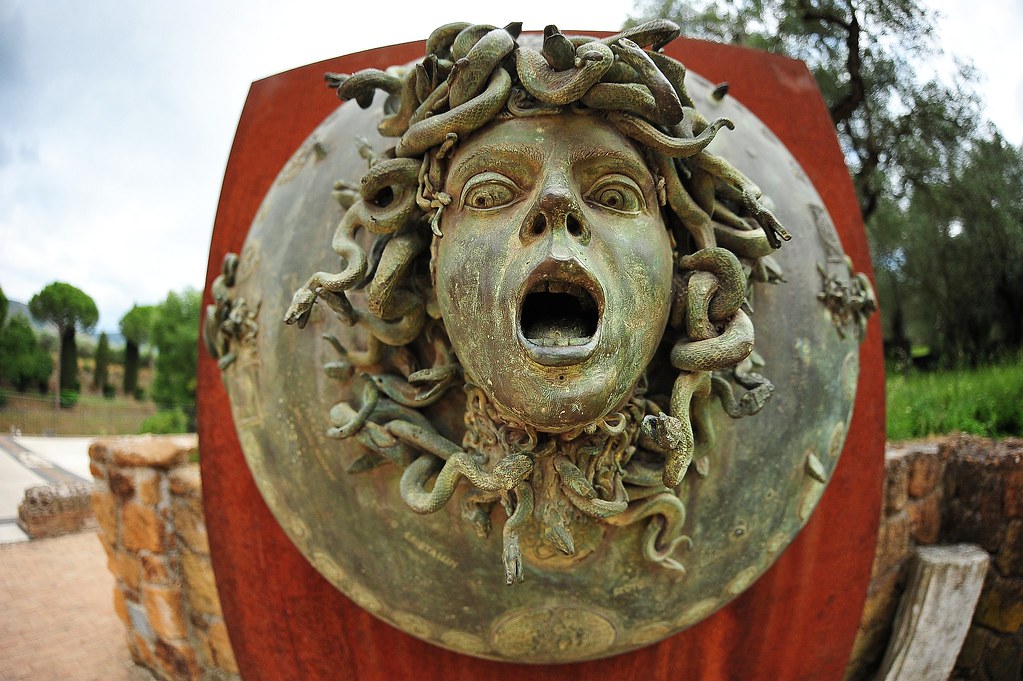
Bronze Head of Medusa, from Hadrian’s Villa, Tivoli, Italy. Villa Hadriana, a UNESCO World Heritage Site comprising the ruins and archaeological remains of a large villa complex built around 120 AD, by Roman Emperor Hadrian near Tivoli outside Rome. It is the most imposing and complex Roman villa known.
The Bronze Head of Medusa: A Marvel of Roman Art

The Bronze Head of Medusa, found at Hadrian’s Villa near Tivoli, Italy, stands out as a notable Roman artifact. This piece, deeply rooted in Greek mythology, offers a fascinating glimpse into the cultural exchange between ancient Greece and Rome. Hadrian’s Villa, where the Medusa head was discovered, is a UNESCO World Heritage Site celebrated for its architectural complexity and historical significance, reflecting the grandeur of Roman imperial architecture.
Medusa: A Mythological Guardian

Medusa, one of the three Gorgons, is a well-known figure from Greek mythology. She is famously portrayed with snake-like hair and a fierce gaze, a depiction meant to inspire both awe and fear. In Greek art, Medusa symbolized protection, her menacing appearance used to ward off evil. Her power was formidable: she could turn anyone who looked directly at her into stone. This mythological background made her image a potent symbol in both Greek and later Roman cultures.
Greek Influence on Roman Art
The significance of Medusa’s image continued into Roman times, showcasing the enduring influence of Greek art on Roman culture. Romans adopted and adapted Greek deities, myths, and artistic styles, integrating them into their own rich tapestry of beliefs and aesthetics. The Bronze Head of Medusa is a prime example of this cultural integration, highlighting how Roman artists were inspired by Greek mythology and iconography.

The Artistic and Cultural Significance of Hadrian’s Villa
Hadrian’s Villa itself is a testament to the splendor of Roman architecture and design. Built by Emperor Hadrian in the 2nd century AD, the villa complex is renowned for its grandiose structures, intricate mosaics, and beautiful sculptures. The discovery of the Medusa head within this setting adds another layer of historical and artistic importance to the site. It not only reflects the aesthetic preferences of the Roman elite but also illustrates the syncretic nature of Roman art, where Greek influences were embraced and reinterpreted.
The Bronze Head of Medusa from Hadrian’s Villa is more than just an artifact; it is a symbol of the cultural and artistic interplay between ancient Greece and Rome. It stands as a reminder of the mythological power of Medusa and the lasting impact of Greek mythology on Roman artistic expression. Hadrian’s Villa, with its architectural grandeur and historical depth, continues to be a source of fascination and insight into the complexities of Roman imperial life and the enduring legacy of classical antiquity.


